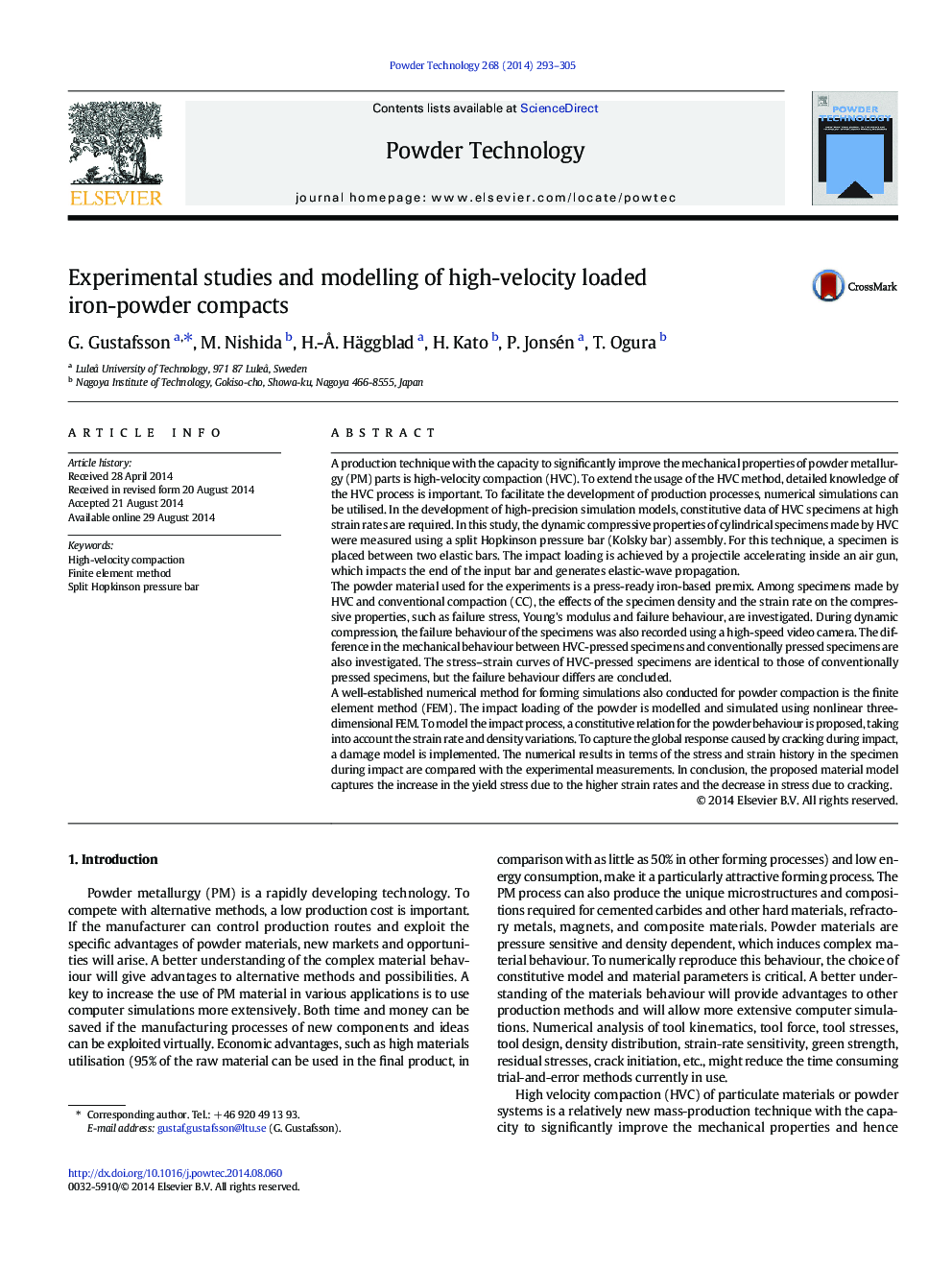| کد مقاله | کد نشریه | سال انتشار | مقاله انگلیسی | نسخه تمام متن |
|---|---|---|---|---|
| 235959 | 465654 | 2014 | 13 صفحه PDF | دانلود رایگان |
• The dynamic compressive properties of iron-powder compacts have been investigated.
• The strain-rate dependence of the yield stress increases with the density.
• A constitutive model is presented that considers the strain-rate dependence.
• The proposed material model captures the strain rate behaviour in the material.
A production technique with the capacity to significantly improve the mechanical properties of powder metallurgy (PM) parts is high-velocity compaction (HVC). To extend the usage of the HVC method, detailed knowledge of the HVC process is important. To facilitate the development of production processes, numerical simulations can be utilised. In the development of high-precision simulation models, constitutive data of HVC specimens at high strain rates are required. In this study, the dynamic compressive properties of cylindrical specimens made by HVC were measured using a split Hopkinson pressure bar (Kolsky bar) assembly. For this technique, a specimen is placed between two elastic bars. The impact loading is achieved by a projectile accelerating inside an air gun, which impacts the end of the input bar and generates elastic-wave propagation.The powder material used for the experiments is a press-ready iron-based premix. Among specimens made by HVC and conventional compaction (CC), the effects of the specimen density and the strain rate on the compressive properties, such as failure stress, Young's modulus and failure behaviour, are investigated. During dynamic compression, the failure behaviour of the specimens was also recorded using a high-speed video camera. The difference in the mechanical behaviour between HVC-pressed specimens and conventionally pressed specimens are also investigated. The stress–strain curves of HVC-pressed specimens are identical to those of conventionally pressed specimens, but the failure behaviour differs are concluded.A well-established numerical method for forming simulations also conducted for powder compaction is the finite element method (FEM). The impact loading of the powder is modelled and simulated using nonlinear three-dimensional FEM. To model the impact process, a constitutive relation for the powder behaviour is proposed, taking into account the strain rate and density variations. To capture the global response caused by cracking during impact, a damage model is implemented. The numerical results in terms of the stress and strain history in the specimen during impact are compared with the experimental measurements. In conclusion, the proposed material model captures the increase in the yield stress due to the higher strain rates and the decrease in stress due to cracking.
Figure optionsDownload as PowerPoint slide
Journal: Powder Technology - Volume 268, December 2014, Pages 293–305
